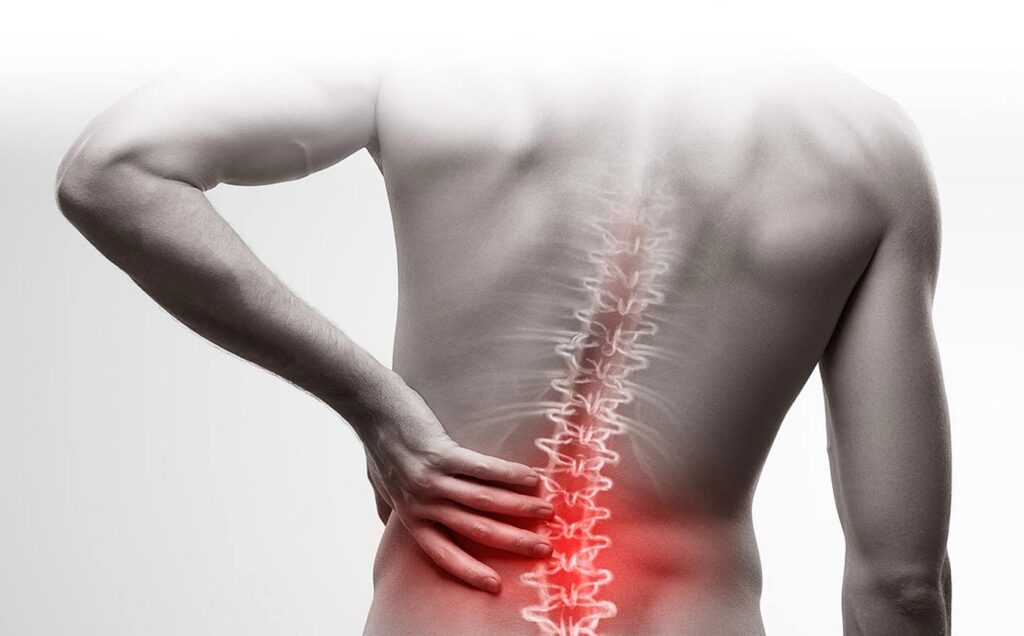Low back pain is one of the most common health issues, affecting millions of people worldwide. However, not all low back pain is the same. It can be broadly classified into two categories: inflammatory and mechanical. Understanding the differences between these types is crucial for accurate diagnosis and effective treatment.
What is Mechanical Low Back Pain?
Mechanical low back pain is the most common type and is usually caused by problems with the musculoskeletal structures of the spine, such as the muscles, ligaments, intervertebral discs, or joints.
This type of pain is often associated with:
Muscle Strain or Sprain: Overstretching or tearing of muscles or ligaments due to heavy lifting, sudden movements, or poor posture.
Degenerative Disc Disease: The breakdown of intervertebral discs, which can lead to disc herniation or bulging, causing pressure on the nerves.
Facet Joint Dysfunction: Inflammation or degeneration of the small joints in the spine, leading to pain and stiffness.
Spondylosis: Age-related wear and tear of the spine, which can cause osteoarthritis in the spine.
Spinal Stenosis: Narrowing of the spinal canal that puts pressure on the spinal cord and nerves.
Symptoms of Mechanical Low Back Pain:
Localized Pain: Typically felt in the lower back and may radiate to the buttocks or thighs but rarely below the knee.
Pain with Movement: Worsens with physical activity, such as bending, lifting, or twisting.
Stiffness: Often felt in the morning or after prolonged periods of sitting or standing, but tends to improve with movement.
Relief with Rest: Pain usually decreases with rest or lying down.
Mechanical low back pain is generally self-limiting, meaning it often improves within a few weeks with conservative treatments such as rest, physical therapy, and over-the-counter pain medications.
What is Inflammatory Low Back Pain?
Inflammatory low back pain is less common and is typically associated with inflammatory conditions, such as ankylosing spondylitis, psoriatic arthritis, or other forms of spondyloarthritis.
Unlike mechanical pain, inflammatory low back pain is caused by inflammation in the spine, particularly in the sacroiliac joints or vertebrae.
Symptoms of Inflammatory Low Back Pain:
Gradual Onset: Pain develops slowly over time and is often present for months or even years before diagnosis.
Morning Stiffness: Significant stiffness and pain are felt in the morning, lasting for more than 30 minutes and often improving with activity.
Night Pain: Pain that wakes you up during the second half of the night and is often worse after prolonged rest.
Alternating Buttock Pain: Pain may shift from one side of the buttocks to the other, a hallmark of inflammatory back pain.
Improvement with Exercise: Unlike mechanical pain, inflammatory pain typically improves with physical activity and does not respond well to rest.
Conditions Associated with Inflammatory Low Back Pain:
Ankylosing Spondylitis (AS): A chronic inflammatory disease that primarily affects the spine and sacroiliac joints, leading to pain and stiffness. Over time, AS can cause the vertebrae to fuse, reducing spinal flexibility.
Psoriatic Arthritis: An inflammatory arthritis associated with psoriasis, which can affect the spine and sacroiliac joints, leading to similar symptoms as AS.
Reactive Arthritis: An inflammatory condition that can develop after an infection, affecting the joints, spine, and eyes.
Diagnosis and Treatment
Diagnosis:
Mechanical Low Back Pain: Diagnosis is often based on a clinical examination and patient history. Imaging tests like X-rays or MRI may be used to identify structural problems in the spine.
Inflammatory Low Back Pain: Diagnosis involves a thorough history, physical examination, blood tests for inflammation markers (like ESR and CRP), and imaging studies, particularly MRI, to detect inflammation in the sacroiliac joints and spine.
Treatment Approaches:
Mechanical Low Back Pain: Conservative treatments include physical therapy, exercise, pain relief medications (NSAIDs), and sometimes spinal injections. Surgery is rarely required unless there is severe structural damage.
Inflammatory Low Back Pain: Treatment focuses on controlling inflammation and preventing joint damage. NSAIDs are often the first line of treatment, but patients may require disease-modifying antirheumatic drugs (DMARDs) or biologics to control the underlying inflammatory condition. Regular exercise and physical therapy are also essential to maintain flexibility and prevent stiffness.
Conclusion
Understanding the distinction between mechanical and inflammatory low back pain is essential for receiving the appropriate treatment.
While mechanical back pain is more common and often resolves with conservative care, inflammatory back pain requires a different approach, focusing on controlling inflammation and preventing long-term complications.
If you’re experiencing persistent or severe low back pain, consulting a healthcare provider for an accurate diagnosis and tailored treatment plan is crucial for managing your condition effectively.

